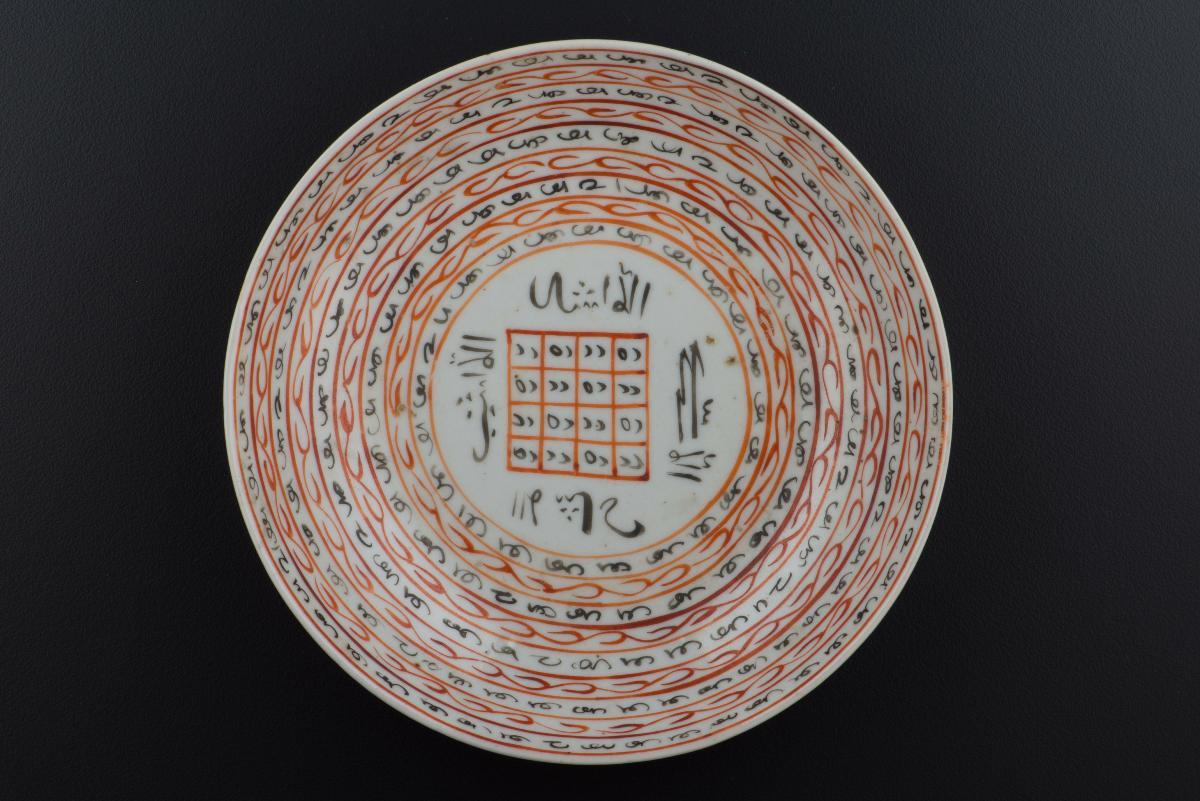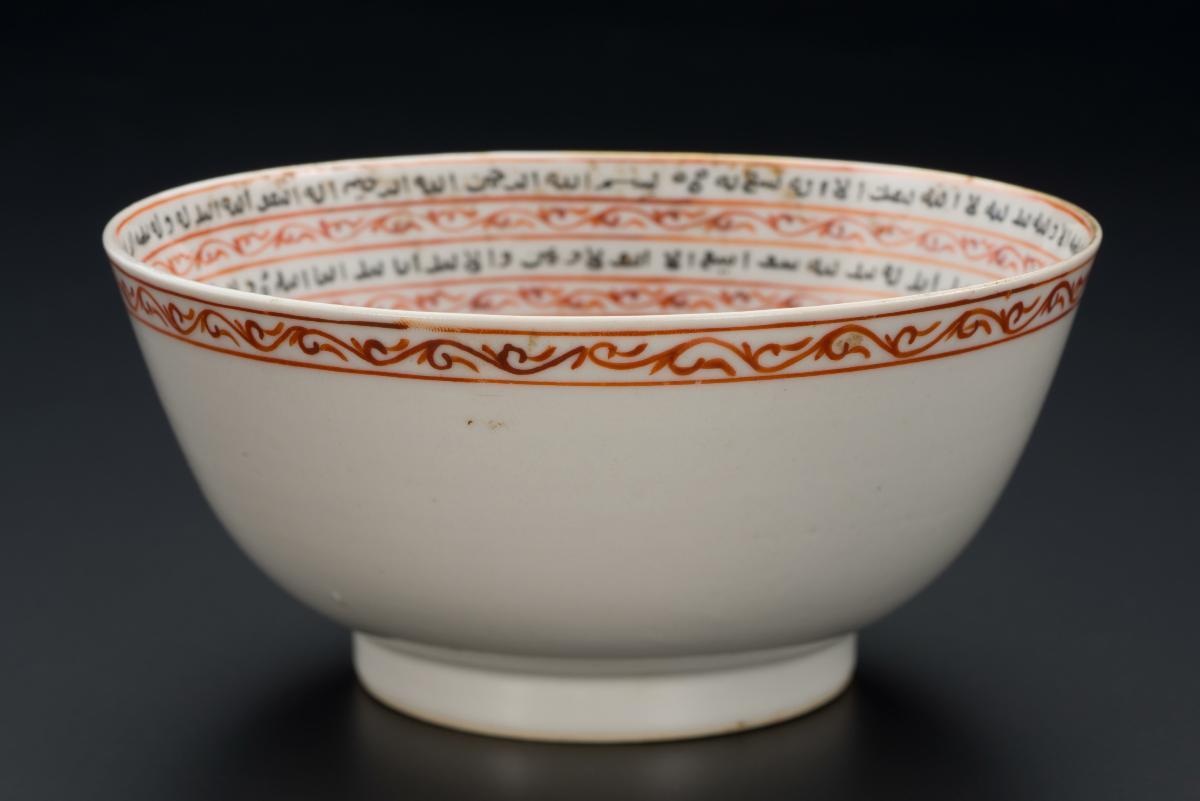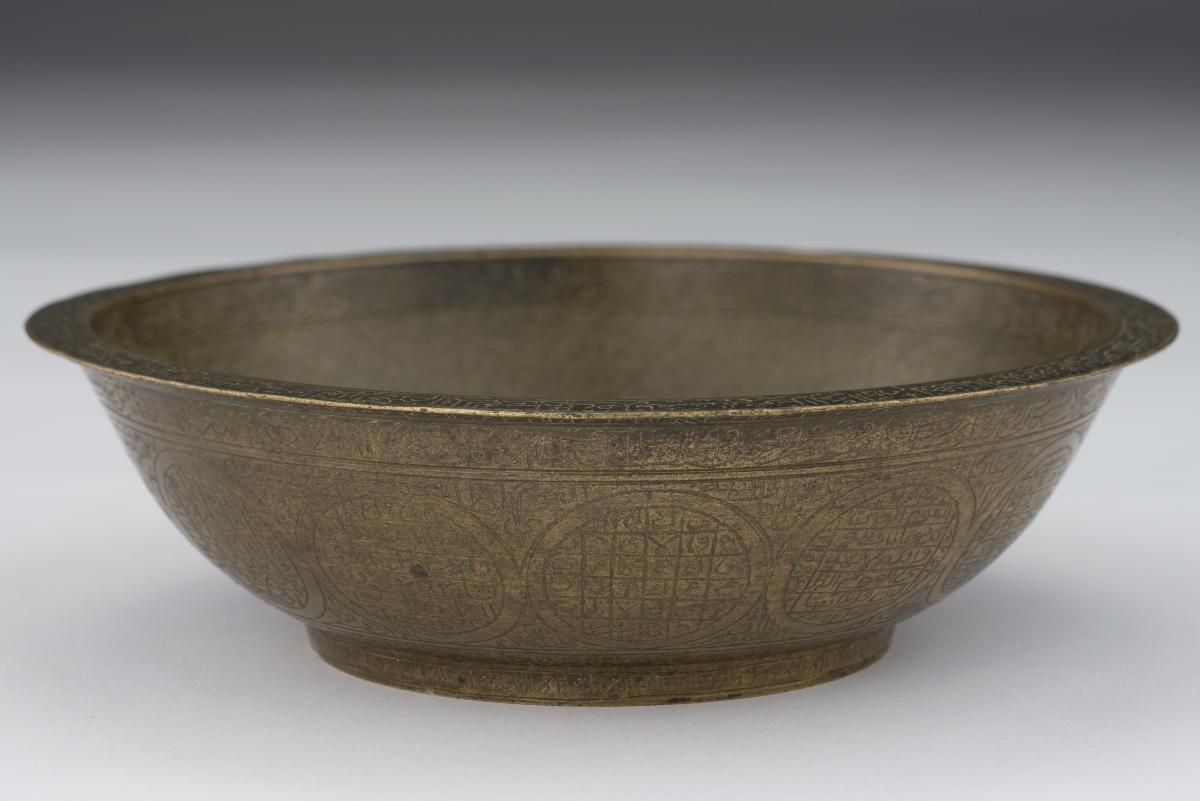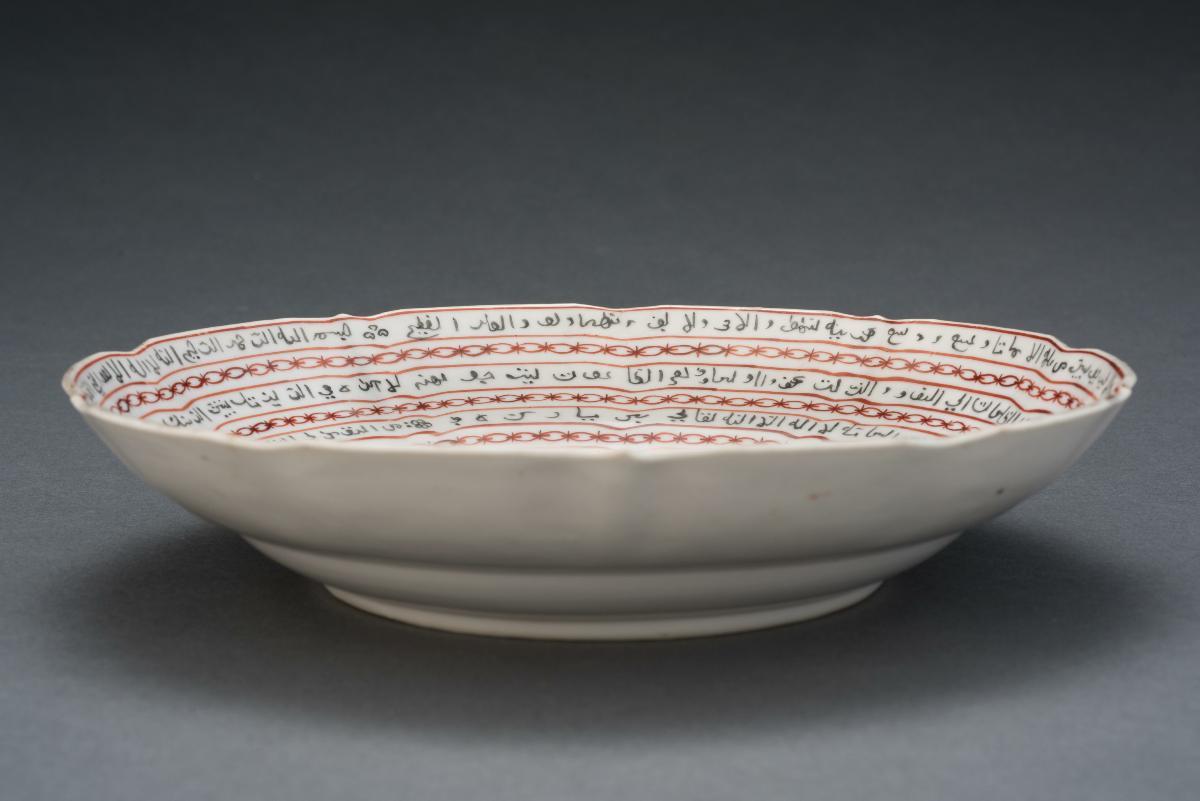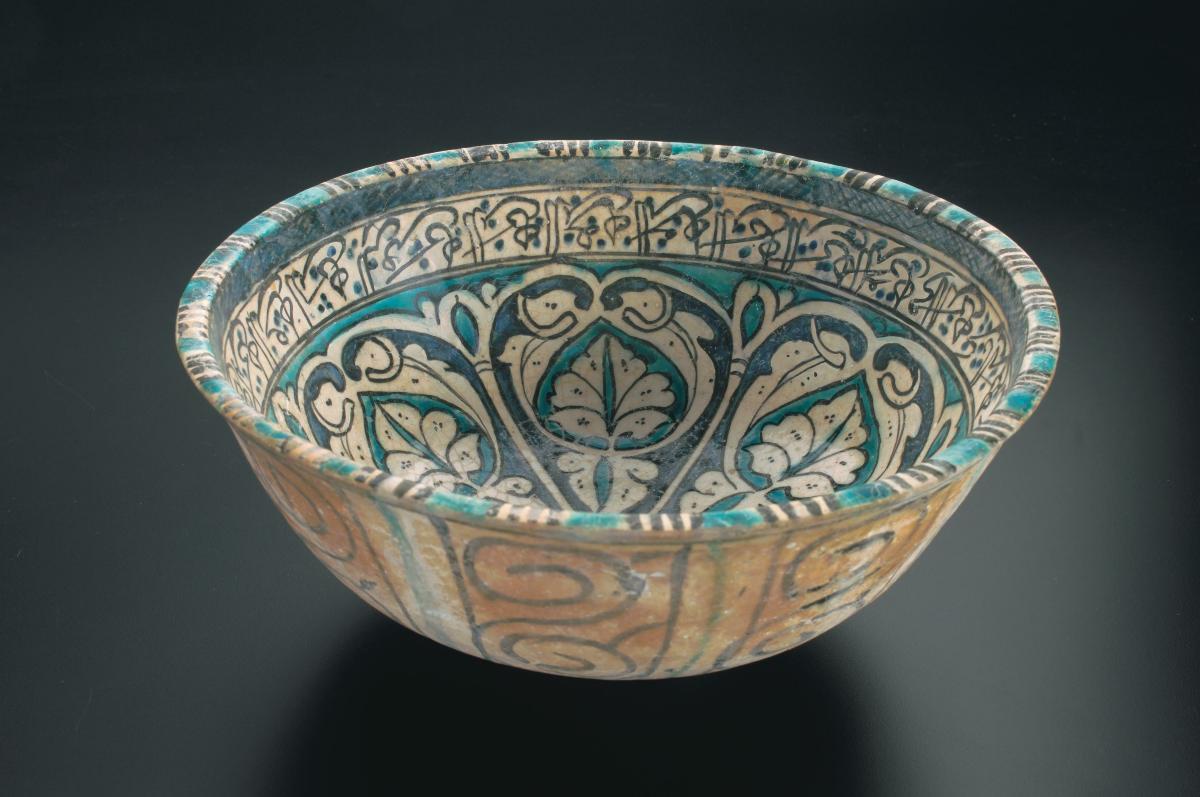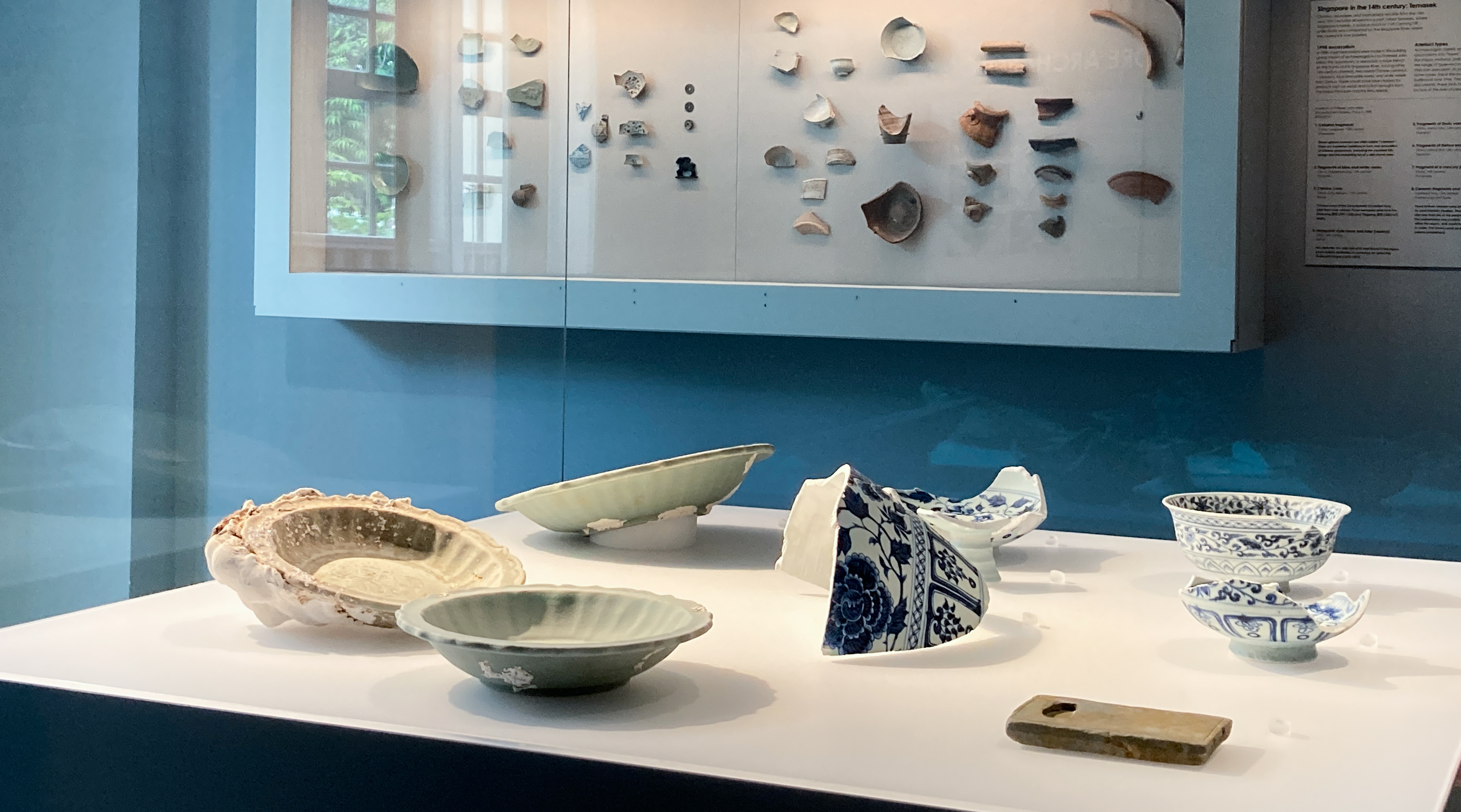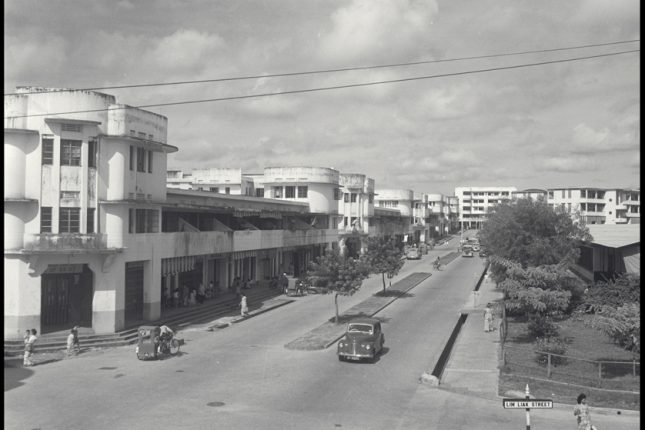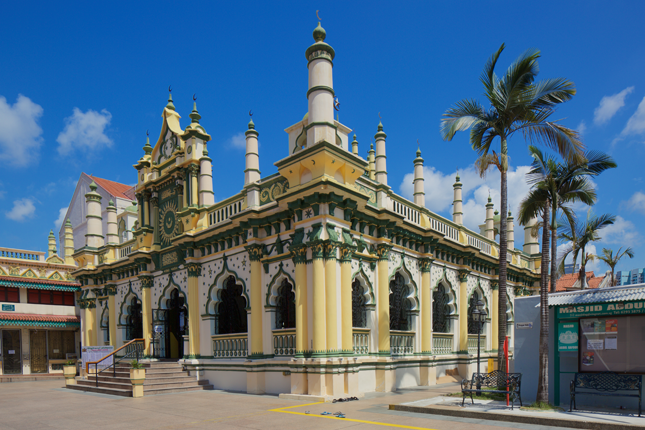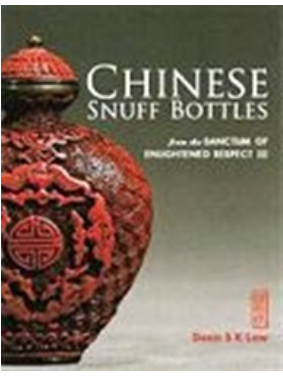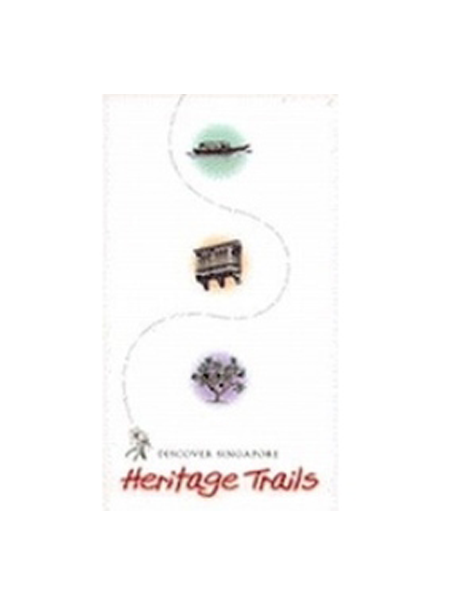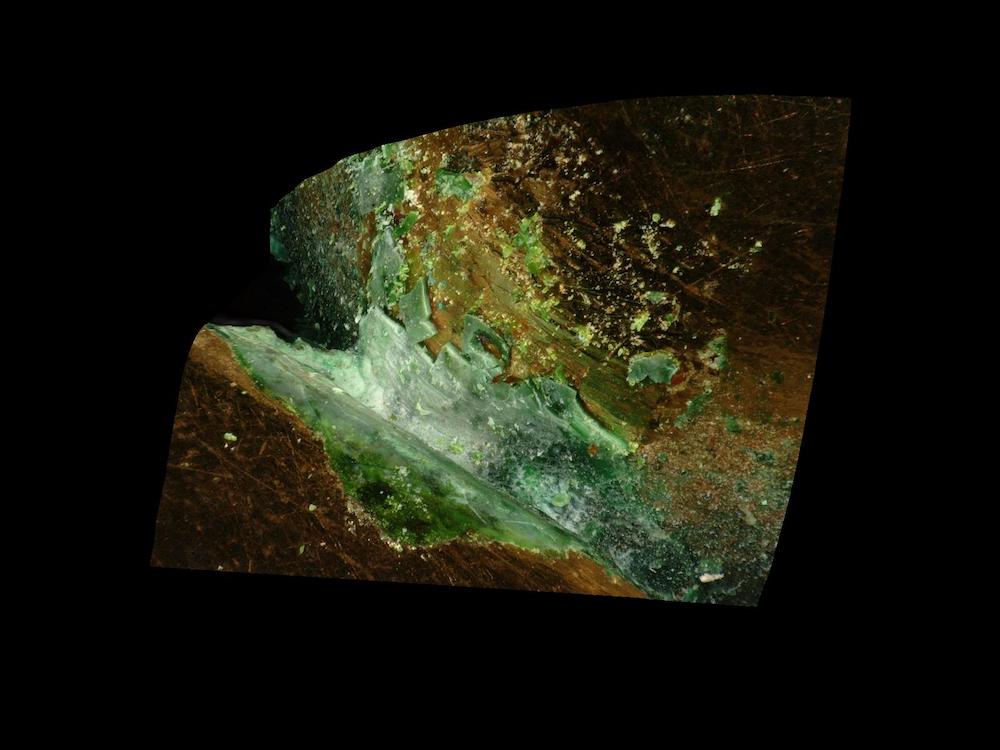The manufacture of this type of porcelain can be traced back to the 16th century. It became a popular export item in the 18th century under the Qing dynasty, and found in Persia, the Muslim courts of India and Indonesia. This type of porcelain—with bands of Arabic verse inked in black, alternating with a red lacquer pattern, with a “magic square” in the centre— are commonly known as “healing bowls” in Islamic tradition. The bands of verse are from the Quran, with the “magic square” and associated phrases believed to have healing powers for the person who drank out of these bowls. The mass manufacture of these bowls sometimes resulted in errors in the Arabic script. This was especially common in the later versions. The style is a blend of the traditional Chinese porcelain form of round-rimmed or foliaterimmed bowls and platters, but with Persian-inspired lacquer and inking of the calligraphy.




